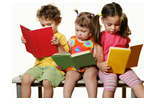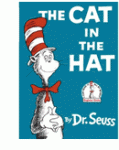
Texting and internet memes must surely be the downfall of formal language, right? Quite a few scholarly studies point to no, actually. While it’s true that conventional English spelling and correct grammar are noticeably absent from the majority of texting conversations, the phonetics are accurate. As literacy advocates, seeing the phrase “C U l8r 2nite” is the equivalent of hearing nails on a chalk board, however one must first understand the correct way to write the phrase before it can be broken down to the text version. Texting also provides an “additional resource for learning about and experimenting with letter-sound correspondences and language, and for reading and ‘decoding’ text.” (Vosloo 2009) The same study also stated, “If our children are showing difficulties with reading and spelling attainment, it would seem that this is in spite of the contribution of textism use, not because of it.” When put into this context, it makes it easier to see that language is evolving not necessarily degrading.
The digital age is upon us and like it or not, faster communication means abbreviating and inventive spelling. Not all teachers view this as a plague of the 21st century. It allows for experimental communication and word play. Most SMS messaging systems allow 160 characters per message. The thought process behind sending a text is more in depth than it appears as far as realizing what needs to be said, how to condense it, and finally how to phrase it so the most information is sent in the fewest words possible. How does this affect the classroom? Teachers need to enforce when and where texting language is appropriate and when conventional English is necessary. Internet celebrity and middle school English teacher, Cindi Rigsbee, sees the front line of this battlefield every day. Instead of ignoring the issue, she addressed it head-on by discussing the Greek and Roman roots of English and eventually leading the conversation down to a popular internet phrase. She also has students translate a barely legible MySpace page into proper English. “We look at Old English, Middle English, and what was contemporary English in the time of Jane Eyre. Then I show them a MySpace page.” (Bernard 2008)
While texting and the language should most definitely not be allowed in the classroom, it is a fact of life in this day and age. What it comes down to ultimately is that texting and internet lingo has a time and a place, much like clothes. Texting isn’t wrong but you wouldn’t wear old sneakers to a formal event, would you?
Bernard, Sara. “Zero-Thumb Game: How to Tame Texting.” Edutopia May 28, 2008. Web. Retrieved April 27, 2010. http://www.edutopia.org/text-messaging-teaching-tool
Vosloo, Steve. “The effects of texting on literacy: Modern scourge or opportunity?” Shuttleworth Foundation Issue Paper April 2009. Web. Retrieved April 27, 2010.









